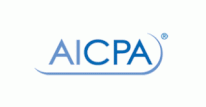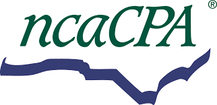|
Part 4 401(k)s The 401(k) plan has become a cornerstone of retirement savings in the United States. Introduced in 1978, the 401(k) plan has evolved into a widely adopted retirement savings vehicle, providing numerous benefits for employees and employers. Benefits for Employees:
Benefits for Employers:
There are a couple of additional items employers should be aware of before implementing a 401(k) plan:
As always, you should contact your tax/financial advisor before implementing any retirement plan. If you would like our assistance choosing the right retirement plan for you, we’d be glad to help. Disclosure: Tax law is constantly changing due to new legislation, cases, regulations, and IRS rulings. Our Firm closely monitors these changes. Please call us before implementing any information discussed in this article, or if you need additional information concerning any item mentioned above. We will gladly assist you. Part 3 SIMPLE IRAs
As small businesses seek to attract and retain talented employees, offering competitive retirement savings plans becomes increasingly important. One such option that has gained popularity is the Savings Incentive Match Plan for Employees (SIMPLE) IRA. This retirement savings plan is designed to be straightforward and accessible for both employers and employees, providing mutual benefits. In this article, we'll delve into the SIMPLE IRA, exploring its features and the advantages it offers to both employers and employees. What is a SIMPLE IRA? A SIMPLE IRA is a retirement savings plan specifically tailored for small businesses with fewer than 100 employees. It allows both employers and employees to contribute to a retirement account, fostering a simple and cost-effective way to provide retirement benefits. Features of a SIMPLE IRA
Benefits for Employers:
Benefits for Employees:
The SIMPLE IRA can be a win-win retirement savings solution for both employers and employees. However, it may or may not be the best option given your business’s unique circumstances. We recommend consulting a tax/financial advisor before beginning any type of retirement plan. Disclosure: Tax law is constantly changing due to new legislation, cases, regulations, and IRS rulings. Our Firm closely monitors these changes. Please call us before implementing any information discussed in this article, or if you need additional information concerning any item mentioned above. We will gladly assist you. Part 1
Offering retirement benefits to your employees is something that is beneficial to you as the employer and to your employees as well. In Part 1 of this article, we will delve into the reasons why your business should consider implementing a retirement plan and explore some common plans that may be suitable. In the weeks that follow, we’ll get into more detail about each of the plans listed. Why Implement a Retirement Plan?
Common Types of Retirement Plans for Small to Medium-Sized Businesses (not an all inclusive list)
There are many factors to consider in determining which plan is right for your business. Give us a call and we’ll gladly help. Disclosure: Tax law is constantly changing due to new legislation, cases, regulations, and IRS rulings. Our Firm closely monitors these changes. Please call us before implementing any information discussed in this article, or if you need additional information concerning any item mentioned above. We will gladly assist you. In recognition of the challenges posed by COVID-19, Congress introduced the Employee Retention Credit (ERC) to help businesses and not-for-profits retain employees during the pandemic, and these credits are still available today. This article will provide an overview of the ERC, including qualification criteria and the process for claiming the credit.
To qualify for the ERC, you must have W-2 employees, and meet either the gross receipts test or the full or partial government ordered shutdown test. 1. Gross Receipts Test:
2. Government Ordered Shutdown Test: If your business or not-for-profit was subject to a full or partial government ordered shutdown due to COVID-19, you may qualify for the time in which you were fully or partially closed. Calculating the Credit: The Employee Retention Credit is calculated based on qualified wages paid to eligible employees during the eligible period. For 2020, the credit is equal to 50% of qualifying wages, with qualifying wages being capped at $10,000 per employee for all of 2020. Therefore, the maximum credit for 2020 is $5,000 per employee. For 2021, the credit is equal to 70% of qualifying wages, with qualifying wages being capped at $10,000 per employee per quarter in 2021 for the 1st, 2nd, and 3rd quarters. The maximum credit for 2021 is $21,000 per employee ($7,000 per employee per quarter for Q1, Q2, and Q3). Claiming the Employee Retention Credit: To claim the employee retention credit, an amended payroll report must be completed for each affected period (Form 941-X for general employers and Form 943-X for farmers). The amended payroll form will be filed with the IRS to request the credit. For the 2020 credit, the deadline is April 2024 and April 2025 for the 2021 credit. The information contained above is a general overview of the ERC, a full description of which is beyond the scope of this article. Calculating and applying for this credit can be complex and we encourage you to contact our office before doing so. We have reached out to many of you regarding the Employee Retention Credit and still plan to reach out to many more. If you haven’t heard from us yet and are interested to see if you qualify, please give us a call. Disclosure: Tax law is constantly changing due to new legislation, cases, regulations, and IRS rulings. Our Firm closely monitors these changes. Please call us before implementing any information discussed in this article, or if you need additional information concerning any item mentioned above. We will gladly assist you. |
Archives
January 2024
Categories |


